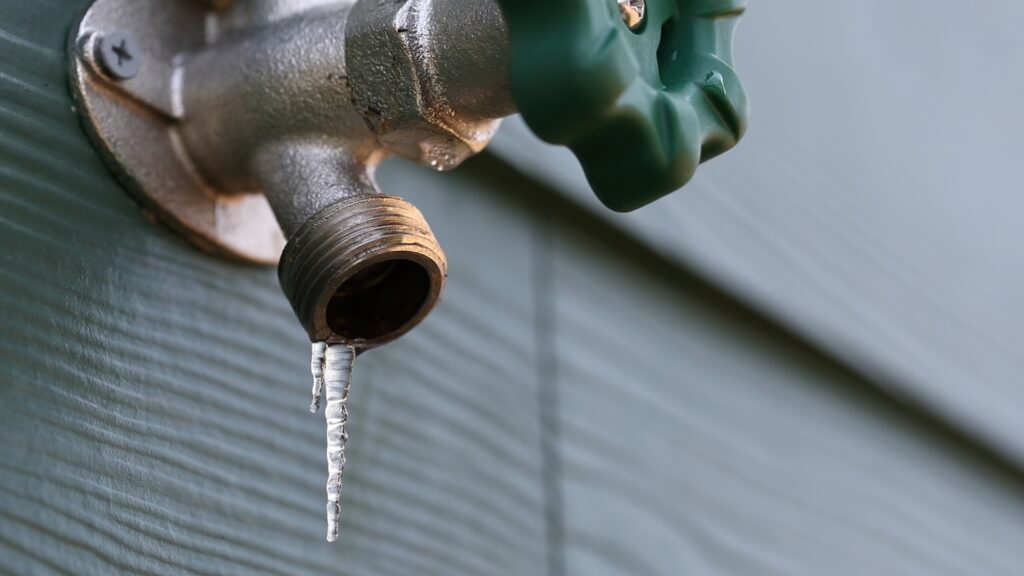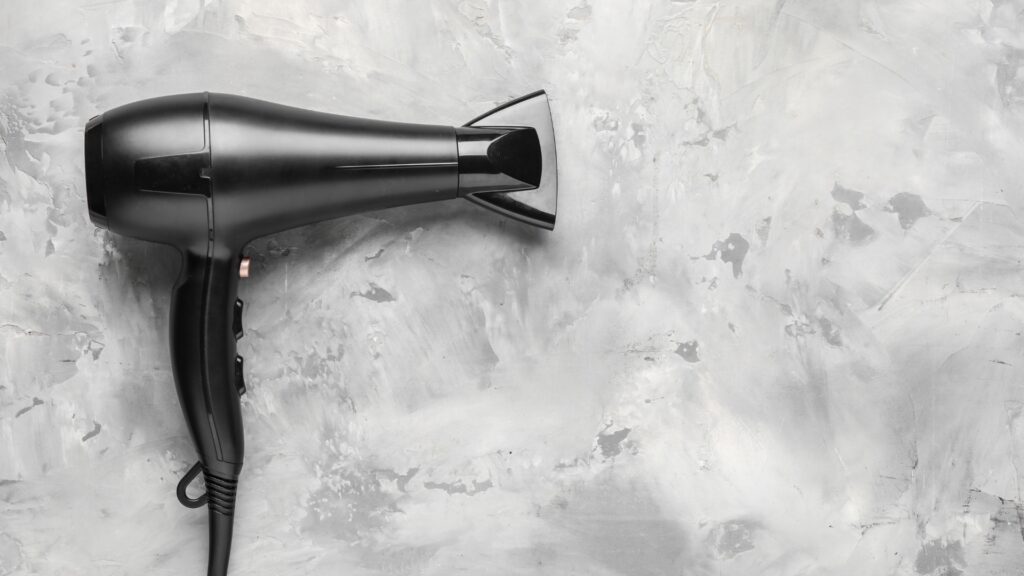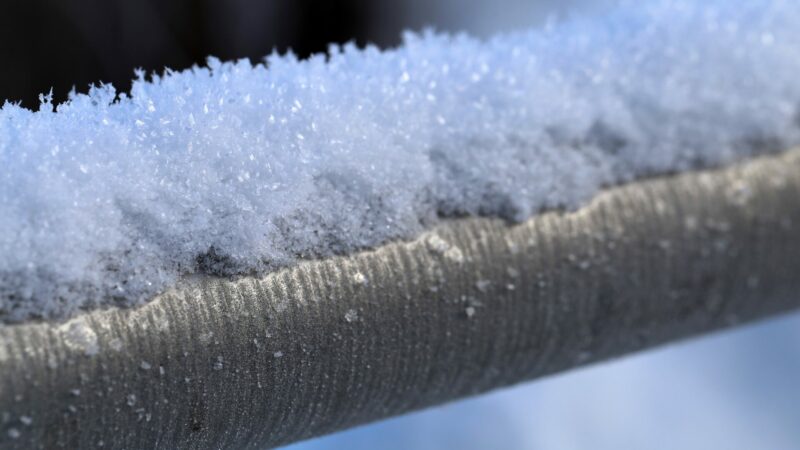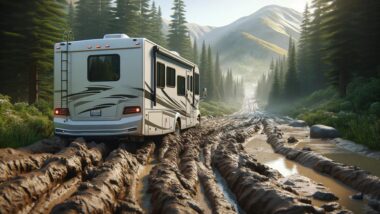Table of Contents Show
Frozen pipes in an RV can be incredibly frustrating. Not only will you have to battle the extreme weather, but you’ll also have to do it with limited access to water.
If you’re lucky, it will only be an individual faucet, toilet, or shower that freezes. However, if it’s your main water supply, things can go south quickly.
Thankfully, there are some things you can do to thaw them out and restore water to your rig. We’re not saying it will be easy, but it’s possible.
Let’s see what you need to do!
Don’t Let Frozen Pipes Ruin Your RV Trip
Mother Nature doesn’t always cooperate or care about your RVing adventures. The weather forecast can change in an instant to cause temperatures to plummet. However, if you take the time to prepare yourself and your rig, frozen pipes don’t have to ruin your trip.
You only have to experience frozen pipes once before taking the situation more seriously. Unfortunately, these situations can do extensive damage to a rig. If you’re lucky, you’ll avoid a major catastrophe the first time and be able to learn your lesson.
Sadly, not everyone is so lucky. You could end up with a busted pipe or damaged fitting. These can lead to leaks in hard-to-reach places. If they go unnoticed, you could end up with water damage or mold growing inside your RV.

At What Temperature Do RV Pipes Freeze?
In general, it takes approximately 24 hours for RV pipes to freeze when the outside temperature is below freezing. This means you don’t have to panic or worry if the overnight temperature is a few degrees below freezing. It will likely not cause any problems for you or your RV.
However, the longer and further temperatures are below freezing, the more concerned you should be. If temperatures dip into the low 20s or teens, it may take only a few hours for the water in your system to freeze your pipes.
Additionally, some RVs come with more insulation and protection from the elements than others. Some feature heat ducts in the understorage and underbelly to help protect the components from the weather.
Pro Tip: If you catch yourself in cold weather unexpectedly, here’s How to Handle an RV One Night Freeze in Your RV.
How to Deal With Frozen Pipes in an RV
Once you discover the pipes in your RV are frozen, you’ll want to take action. However, success can take a tremendous amount of time and energy. Sometimes, your best bet is to wait for warmer weather and let the sun do the work for you.
Identify the Frozen Pipes
The first thing you need to do is to identify which pipes in your RV are frozen. If you have multiple sinks or bathrooms, it’s not uncommon for one to freeze while the other remains unimpacted.
All you have to do is turn on the faucet, let it run for a second or two, and move on to the next one.
Don’t overlook showers and toilets while identifying any frozen pipes. While it may not be ideal, your only access to water could be through a shower faucet. However, it’s better than nothing and could save the day if you go a few days with frozen pipes.
Open Faucets
After testing all the faucets and water connections, you’ll want to open them. This will allow water to drip and exit the pipes as it melts slowly. Additionally, this can let you know as soon as possible once they’re no longer frozen.
However, one important thing to remember is that you shouldn’t leave your faucets open if you’re going to be away from your camper.
If you do and your pipes thaw while you’re away, you could return to a flooded camper. This can cause extensive and costly damage to your camper and will likely ruin any upcoming camping trips.
Apply Heat
Applying heat is the next step in dealing with your RV’s frozen pipes. An easy way to do this is to use a hairdryer or space heater.
However, be careful not to get these appliances too close to the pipes or your walls, as they can cause damage. While you may be in a hurry to get water flowing throughout your rig, you want to avoid causing a bigger problem for yourself.
The key is to provide consistent and controlled heat to the impacted area. Turning up your furnace can help pump warm air into hard-to-reach areas to help do the job.
This can take anywhere from a few minutes to several hours. Just be patient and know that you’ll have running water again soon.

Consider Heat Tape
If you continually have issues with frozen water lines, it may be time to consider heat tape. All you’ll need to do is to wrap these materials around the impacted water lines.
The tape will warm up once you connect it to a power source. It’ll provide constant heat to the pipe and quickly thaw it out.
Heat tape is also a solid option to prevent the ice from accumulating in the first place. If you’re continually having this issue, it’s best to take a proactive approach.
Install it beforehand or for the season and use it as necessary. When used correctly, you can avoid frustrations and not deal with frozen pipes.
- Use for water filled plastic (including PEX) or metal pipes. Not use for anything else, like empty water pipes, fuel...
- Pre-assembled easy to install. Including grounded plug with light, built in thermostat, and instructions. Easy to...
Insulate Pipes
Another preventative option is insulating your camper’s pipes and water lines. Unfortunately, some manufacturers skimp on insulation when creating rigs.
Luckily, a quick trip to your local hardware store is all you’ll need to pick up the supplies to beef up and protect your rig.
Pipe insulation is cheap and easy to install. It wraps around your water lines and acts as a blanket or coat for these sensitive plumbing pieces. It might surprise you how much an inch or two of foam can do to keep your water lines from freezing.
This is an easy DIY project that we recommend doing at the end of a camping season, especially if you plan to spend time in cold temps.
Pro Tip: RV insulation is essential for having the best RV experience. Check out our insulation guide to stay comfortable in your RV on a budget!
Use Space Heaters
We mentioned earlier that heat will be your best friend to thaw or avoid frozen water lines. Space heaters can generate tremendous heat but also require lots of power.
When used correctly, these can be safe and a great way to avoid plumbing issues while enjoying cold-weather camping.
However, like the other warning about using heat, you should take some precautions. Avoid setting them too close to the wall or other objects that could get damaged or ignite a fire.
Also, never leave them running if you’re not nearby to keep an eye on things. Many things can go wrong in a hurry and you don’t want to be away or not be paying attention in these dangerous situations.
- SMALL HEATER MEASURES : Our portable space heaters with size of 7.3" X 5.3" x 9.5".Equipped with a Cord.Energy...
- CERAMIC SPACE HEARER : Advanced ceramic heating elements provide faster and more efficient heating than traditional...
Prevent Future Freezing
We mentioned installing insulation and heat tape, which are great options but require advanced planning. You can prevent future freezing problems in your camper by taking a few steps to prepare for freezing temperatures.
Look for weak points in your camper and increase the insulation in these areas. The best time to do this is in the last few weeks of the camping season. You will have plenty of time to avoid feeling the urge to rush the project.
Additionally, if you’re stationary or in a seasonal spot, you can install RV skirting, which can be incredibly effective. It’ll keep the cold air out from under your camper and decrease the chances of experiencing frozen water lines.
However, you’ll want to check with management if you’re in a campground or RV park. Some have strict rules or requirements for these.
Learn More: If you want to go beyond protecting your RV pipes, read How to Protect Your RV and Stay Warm in Freezing Temperatures!
If You Can’t Unfreeze Your Pipes, Have a Backup Water Source
Thankfully, frozen pipes are only temporary. However, knowing this won’t change anything in the middle of a situation. As a result, you must have a backup plan for how you’ll get water in these situations.
One of the easiest solutions is using a water pump on a 5-gallon water jug. They can be extremely useful in everyday situations, especially if you don’t know when you’ll have running water again.
If the forecast calls for severe weather, it’s a good idea to stock up on water beforehand. Always having a jug or two of water on hand can help you avoid a dangerous situation.
- Prioritize Your Health: Our Water Dispenser is designed using food-grade materials that ensure all parts that come in...
- Two Mode: 1.Water Dispenser Mode:Once single click of the switch, the dispenser will automatically switch off within 1...
Are Frozen Pipes Common in an RV?
Unfortunately, frozen pipes are extremely common in RVs, especially for those who enjoy winter camping. However, the more you gain experience, the more you can learn to avoid experiencing severe issues.
Freezing temperatures don’t have to derail your trip or cause you to cancel your plans. If you take the proper steps, you can still have an incredible time whether your pipes freeze or not.
Do you have any other tips for dealing with frozen RV pipes?
Last update on 2024-10-21 / Affiliate links / Images from Amazon Product Advertising API









